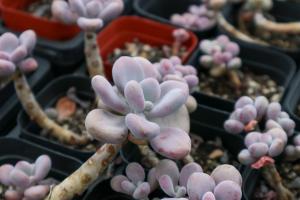What to Plant Together: Tips for Successful Companion Planting
Companion planting is an essential technique for any gardener looking to maximize their harvest and promote healthy garden ecosystems. By pairing certain plants together, you can create a mutually beneficial environment in which each plant supports the other鈥檚 growth and helps deter pests and diseases. Here are some tips for successful companion planting and an overview of some popular plant pairings.
Planting Vegetables Together
When it comes to planting vegetables, there are several plant pairings that work well together. Two popular combinations are tomatoes and basil and carrots and onions.
Tomatoes and basil are the perfect pairing because they both like similar growing conditions and have similar nutritional requirements. Basil acts as a natural pest repellent for tomatoes and also improves their flavor. Carrots and onions are also great companions since they have different root depths, so they don't compete for nutrients. Onions can also repel pests that might otherwise harm your carrot crop.
Another successful pairing is beans and corn. Beans add nitrogen to the soil, which corn needs for healthy growth, while corn provides support for the beans to climb. Additionally, planting flowers, such as marigolds, in between vegetable rows can help deter pests and attract beneficial insects.
Planting Herbs Together
Herbs are excellent for companion planting because they鈥檙e easy to grow, are generally hardy and can help deter pests. Popular herb pairings include garlic and sage, and thyme and rosemary.
Garlic is an excellent pest repellent and helps deter aphids, cabbage loopers, and spider mites. By planting garlic around your herb garden, you can help prevent these pests from attacking your plants. Sage is a great pairing with garlic since it also helps repel pests and improves the flavor of many vegetables.
Thyme and rosemary are also an excellent combination since they prefer similar growing conditions and thrive in dryer soils. Both herbs help deter pests and can be used to flavor a variety of dishes.
Planting Flowers Together
Flowers are an excellent addition to any garden and are known for attracting beneficial insects such as bees and butterflies. When it comes to companion planting, some popular flower pairings include nasturtiums and marigolds and sunflowers and zinnias.
Nasturtiums are an excellent companion to many vegetables, including tomatoes, cucumbers, and squash. The flowers of the nasturtium plant are edible and have a peppery taste that can be added to salads. Marigolds are also ideal for companion planting since they repel pests such as nematodes and whiteflies.
When pairing flowers with vegetables, consider planting sunflowers and zinnias. Sunflowers, in particular, are known for attracting bees to the garden, which can improve pollination and lead to a healthier harvest. Zinnias also attract beneficial insects, so they are an excellent addition to any garden.
Conclusion
Companion planting is an excellent way to create a thriving garden while reducing pest problems and improving the flavor of your crops. By understanding which plants work well together and which ones should be separated, you can create a thriving ecosystem in your garden. Whether you鈥檙e planting vegetables, herbs, or flowers, companion planting is a technique that every gardener should consider.

 how many times do yo...
how many times do yo... how many planted tre...
how many planted tre... how many pine trees ...
how many pine trees ... how many pecan trees...
how many pecan trees... how many plants comp...
how many plants comp... how many plants can ...
how many plants can ... how many plants and ...
how many plants and ... how many pepper plan...
how many pepper plan...
































